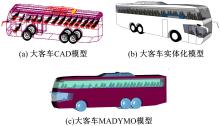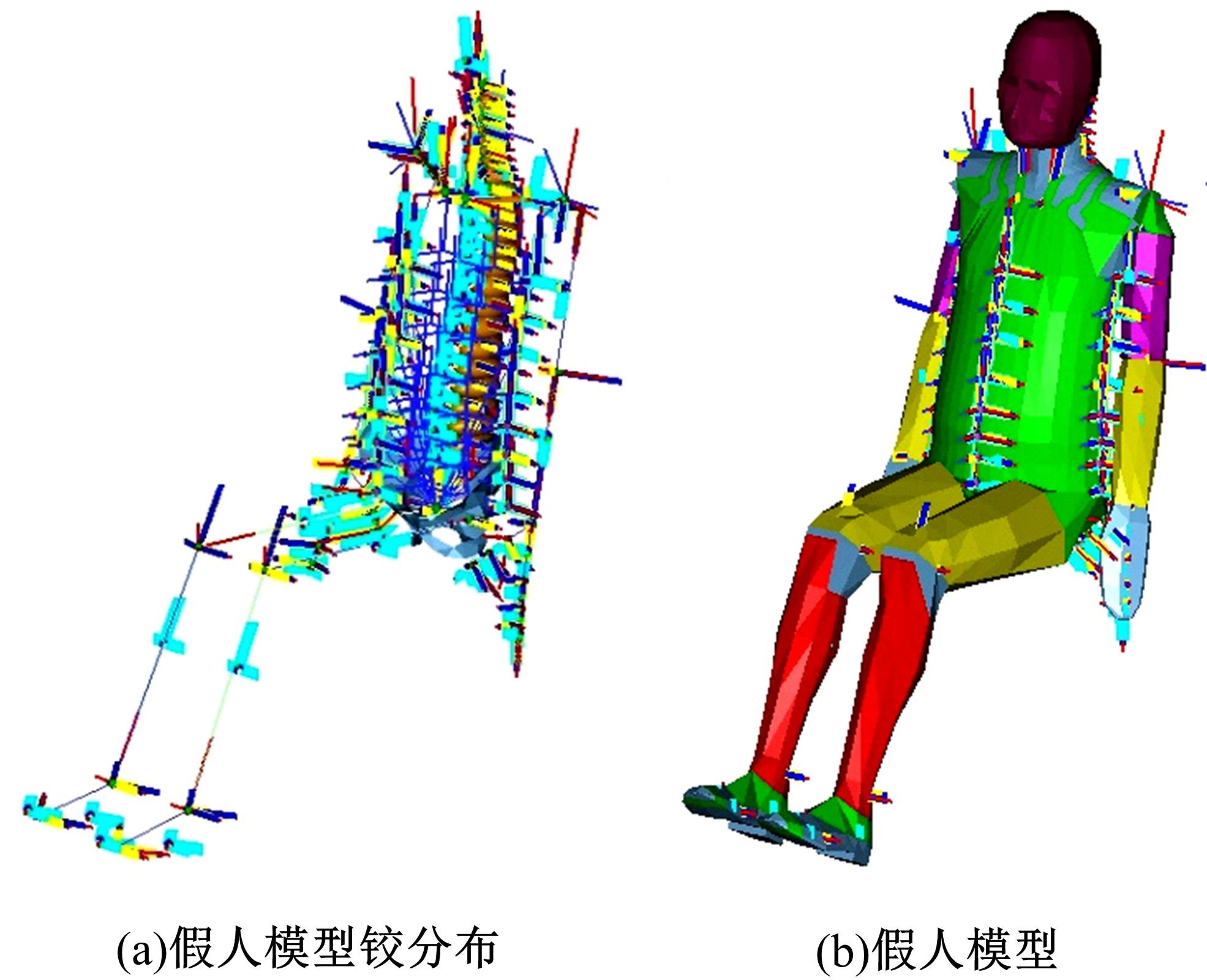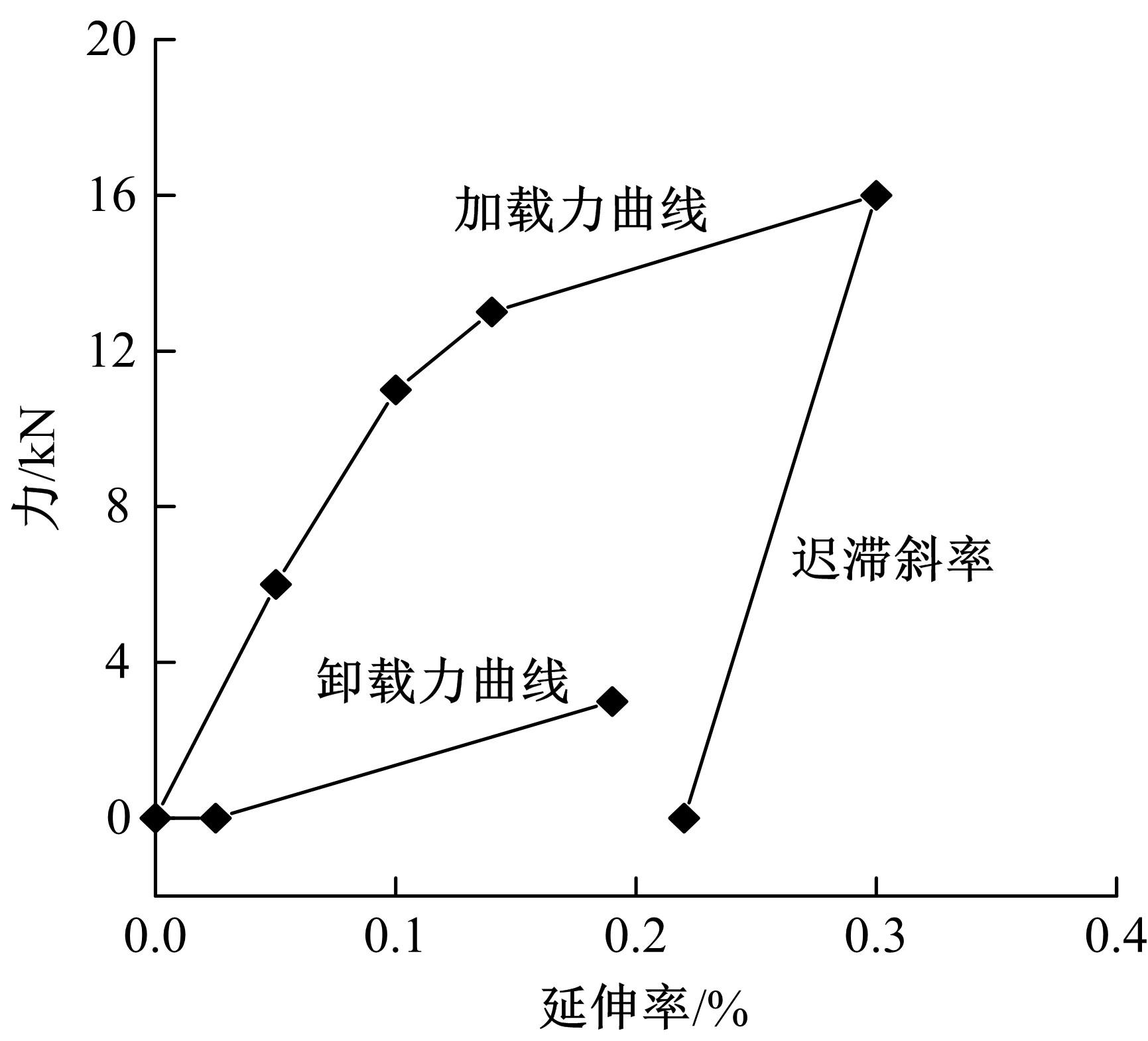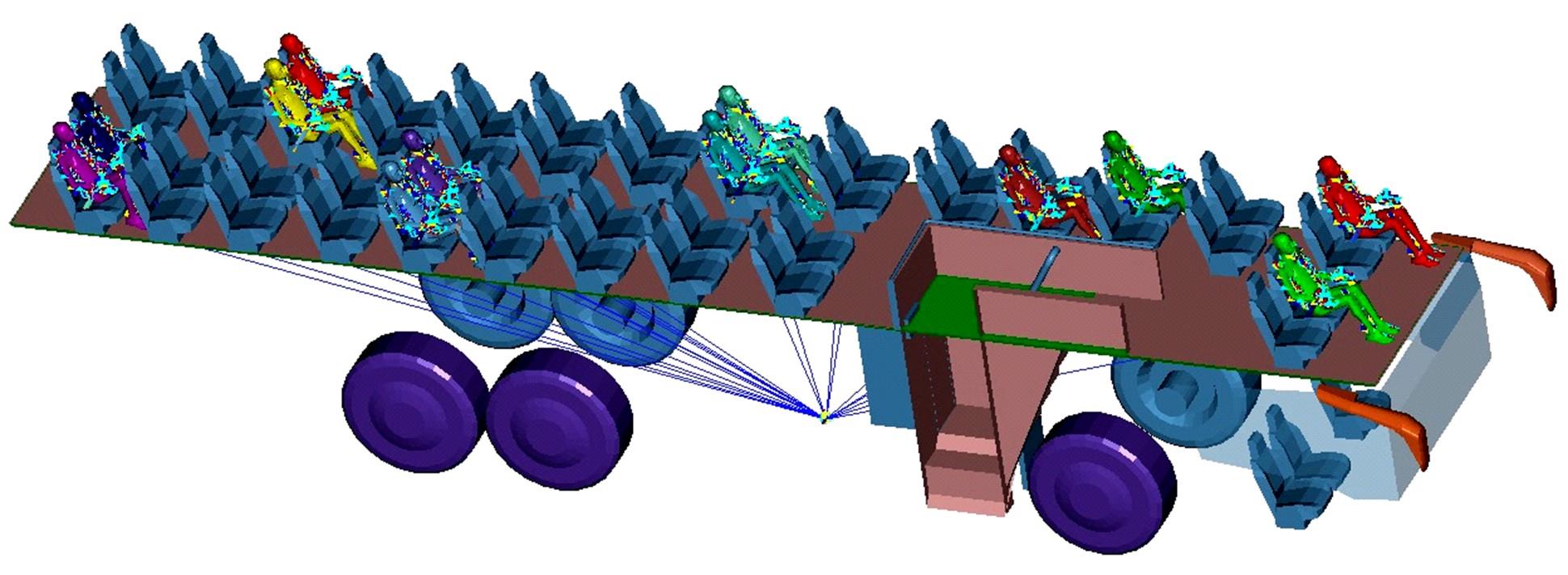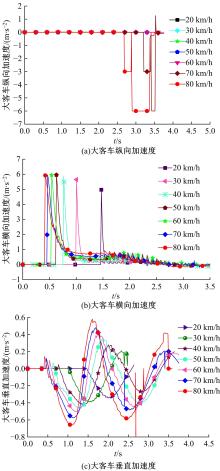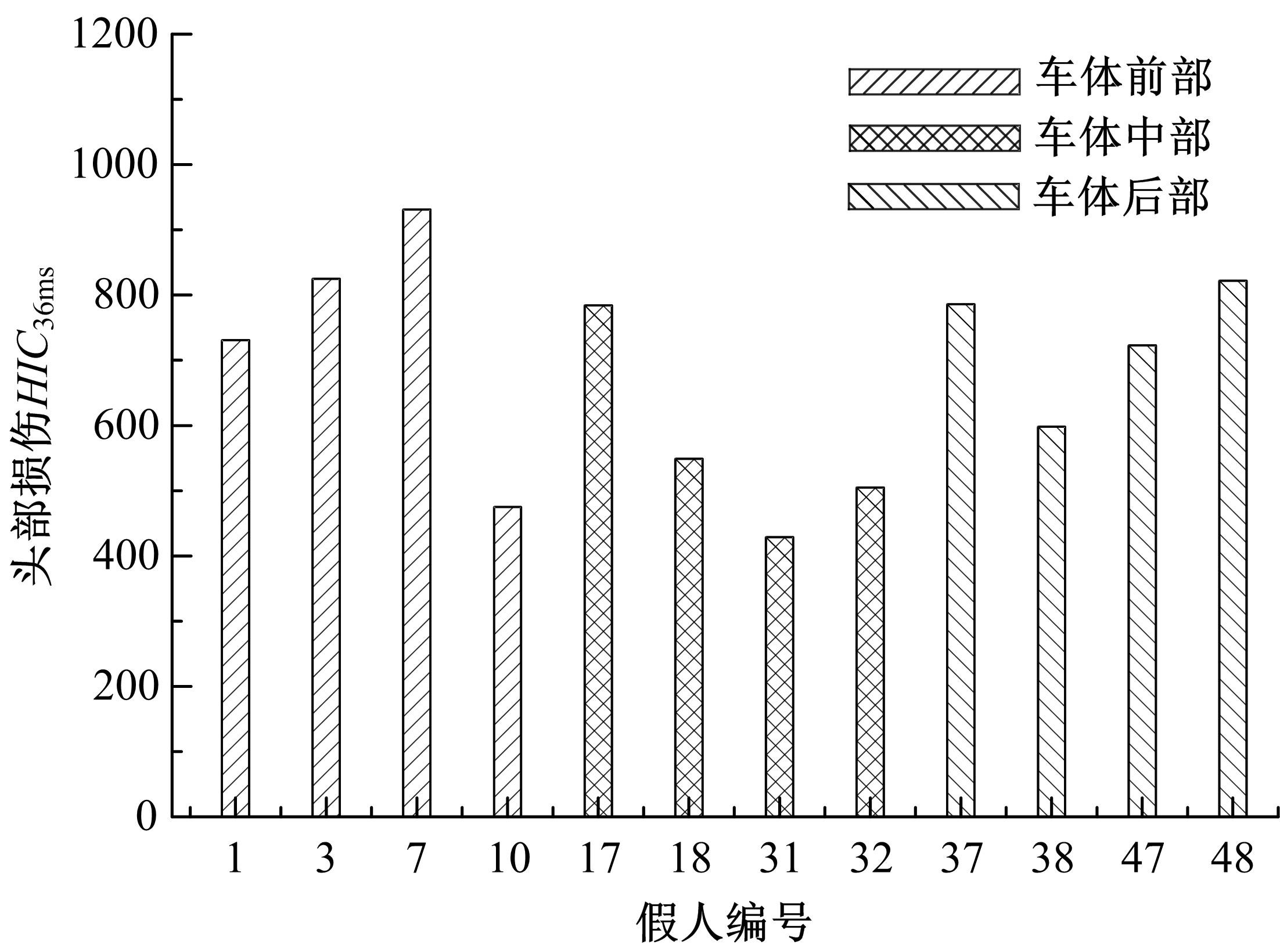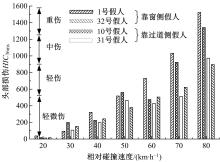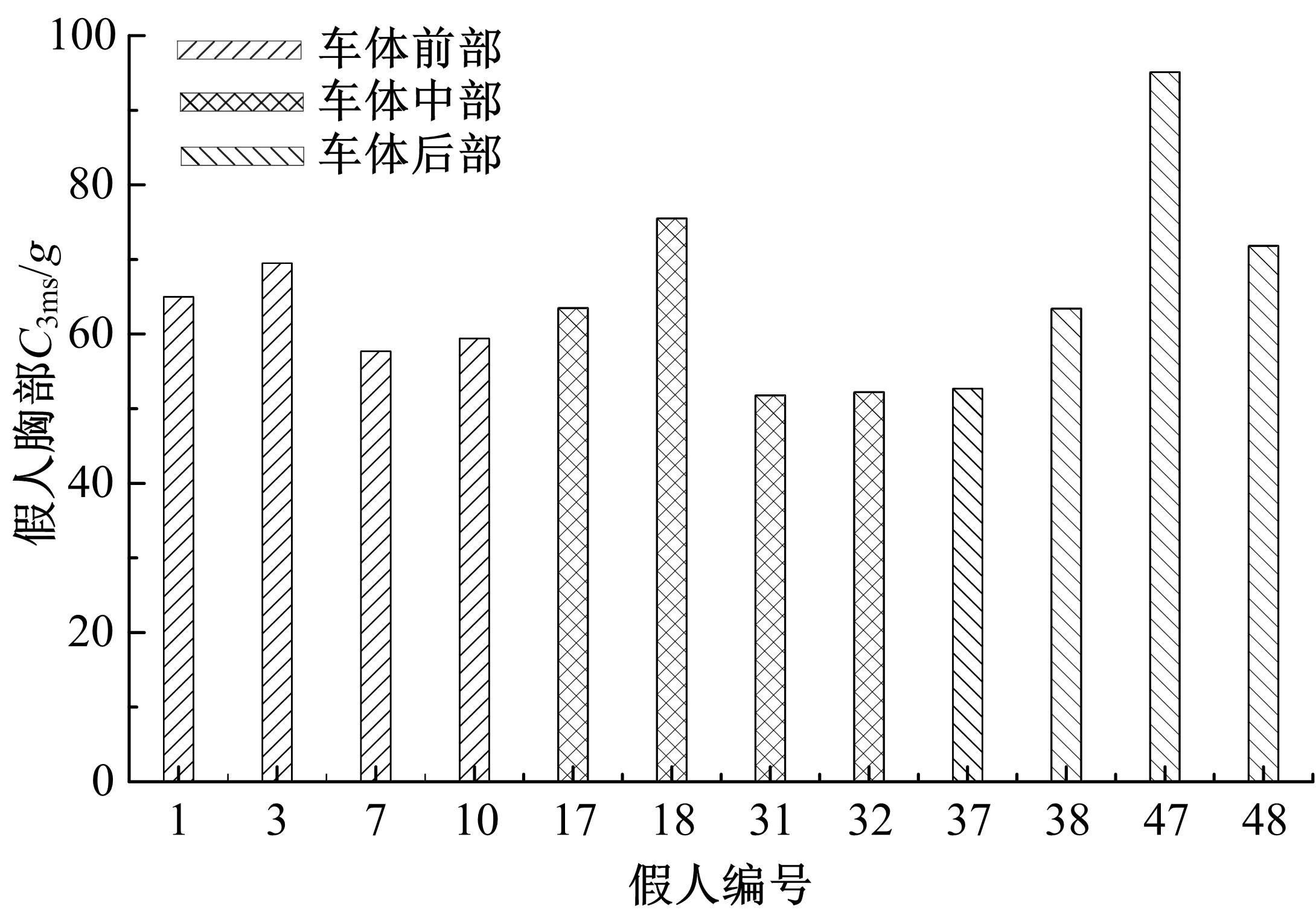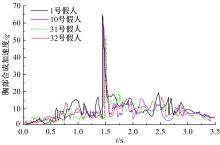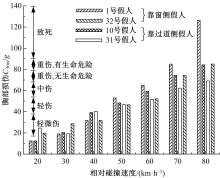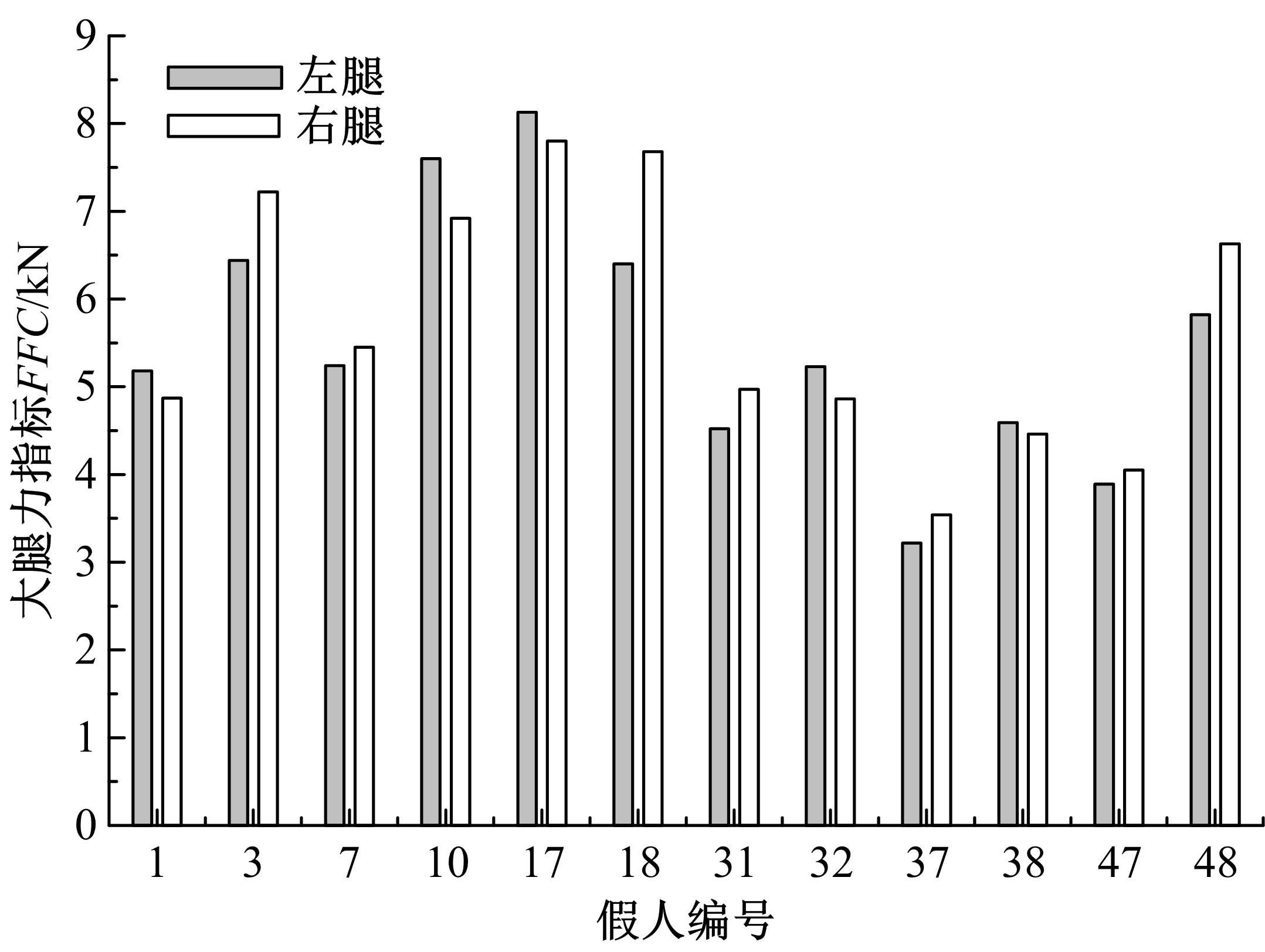Journal of Jilin University(Engineering and Technology Edition) ›› 2022, Vol. 52 ›› Issue (1): 118-126.doi: 10.13229/j.cnki.jdxbgxb20200728
Injury mechanism of occupants in bus during rear-end crash based on MADYMO
Wen-hui ZHANG( ),Jing YI,Wei LIU,Qiu-ying YU,Lian-zhen WANG(
),Jing YI,Wei LIU,Qiu-ying YU,Lian-zhen WANG( )
)
- School of Traffic and Transportation,Northeast Forestry University,Harbin 150040,China
CLC Number:
- U491.31
| 1 | 杨亚东. 基于突变理论的道路交通事故致因机理研究[J]. 交通工程, 2018, 18(3): 40-45. |
| Yang Ya-dong. Study on the cause mechanism of road traffic accidents based on catastrophe theory[J]. Traffic Engineering, 2018, 18(3): 40-45. | |
| 2 | Chen C, Liu X M, Chen H H. A rear-end collision risk evaluation and control scheme using a bayesian network model[J]. Transactions on Intelligent Transportation Systems, 2019, 20(1): 264-284. |
| 3 | 江亮,贺宜.电动两轮车风险驾驶行为及事故影响因素分析[J]. 吉林大学学报: 工学版, 2019, 49(4): 1107-1113. |
| Jiang Liang, He Yi. Analysis of risky driving behavior and accident influencing factors of electric two-wheeled vehicles[J]. Journal of Jilin University( Engineering and Technology Edition), 2019, 49(4): 1107-1113. | |
| 4 | 张文会, 于秋影, 沈航先. 基于SEM的高速公路事故路段行车风险因素辨识[J]. 森林工程, 2021, 37(2): 95-103. |
| Zhang Wen-hui, Yu Qiu-ying, Shen Hang-xian. SEM-based identification of driving risk factors in highway accident sections[J]. Forest Engineering,2021, 37(2): 95-103. | |
| 5 | 兰凤崇,王俊峰,曾子聪,等. 人-车碰撞事故再现及头部损伤生物力学分析[J]. 重庆理工大学学报: 自然科学, 2019, 33(8): 8-15. |
| Lan Feng-chong, Wang Jun-feng, Zeng Zi-cong, et al. Reconstruction of human vehicle collision and biomechanical analysis of head injury[J]. Journal of Chongqing University of Technology: Natural Science, 2019,33(8): 8-15. | |
| 6 | Ge Ru-hai, Zhang Su-xiu, Hong Liang. Optimization of front-row occupant restraint system with NSGA-Ⅱ genetic algorithm[J]. Automotive Engineering, 2017, 39(12):1382-1389. |
| 7 | 陈吉清,杜天亚,兰凤崇,等. 汽车碰撞中乘员腹部损伤机理及生物力学响应研究进展[J]. 汽车工程学报, 2015, 5(2): 79-89. |
| Chen Ji-qing, Du Tian-ya, Lan Feng-chong, et al. Research progress on mechanism and biomechanical response of occupant abdominal injury in vehicle collision[J]. Acta Automotive Engineering, 2015, 5(2): 79-89. | |
| 8 | Jost R, Nurick G N. Finite element modelling of the human body in vehicle side impact[J]. International Journal of Crashworthiness, 1999, 4(1):31-37. |
| 9 | Xu J J, Wali B H, Li X B, et al. Injury severity and contributing driver actions in passenger vehicle-truck collisions[J]. International Journal of Environmental Research and Public Health, 2019, 16(19): 3542. |
| 10 | Zou Tie-fang, Yu Zhi, Cai Ming, et al. Car-pedestrian accident reconstruction based on Pc-Crash[J]. Journal of Vibration and Shock, 2011, 30(3): 215-219. |
| 11 | 周华,彭一峻,刘卓异,等. 约束系统对不同体型女性驾驶人的保护研究[J]. 中国安全科学学报, 2019, 29(4): 76-82. |
| Zhou Hua, Peng Yi-jun, Liu Zhuo-yi, et al. Study on the protection of restraint system for female drivers with different body sizes[J]. Chinese Journal of safety Sciences, 2019, 29(4): 76-82. | |
| 12 | 周鸣昊,李傲,谷先广. 考虑多种工况的乘员约束系统可靠性优化设计[J]. 合肥工业大学学报: 自然科学版, 2019, 42(7): 888-894. |
| Zhou Ming-hao, Li Ao, Gu Xian-guang. Reliability optimization design of occupant restraint system considering various working conditions[J]. Journal of Hefei University of Technology(Natural Science Edition), 2019, 42(7): 888-894. | |
| 13 | 张鹏,张道文,肖凌云,等. 男性行人与SUV正碰后的运动形态及损伤研究[J]. 中国安全科学学报, 2019, 29(1): 25-30. |
| Zhang Peng, Zhang Dao-wen, Xiao Ling-yun, et al. Study on the movement pattern and injury of male pedestrian after frontal collision with SUV[J]. Chinese Journal of Safety Sciences, 2019, 29(1): 25-30. | |
| 14 | 王波, 何洋扬, 聂冰冰,等. 底部爆炸条件下车内乘员的腹部损伤[J]. 吉林大学学报:工学版, 2021, 51(3): 792-798. |
| Wang Bo, He Yang-yang, Nie Bing-bing, et al. Abdominal injury of occupants in a car under the condition of bottom explosion[J]. Journal of Jilin University(Engineering and Technology Edition), 2021, 51(3): 792-798. | |
| 15 | 洪汉池,黄红武. 客车侧翻碰撞中安全带对乘员损伤的影响分析[J]. 重庆大学学报, 2016, 39(3): 140-146. |
| Hong Han-chi, Huang Hong-wu. Analysis of the impact of seat belt on occupant injury in rollover crash[J]. Journal of Chongqing University, 2016, 39(3): 140-146. | |
| 16 | 曹立波,欧阳志高,徐哲,等. 可逆约束系统参数匹配优化研究[J]. 机械工程学报, 2016, 52(10): 133-141. |
| Cao Li-bo, Ouyang Zhi-gao, Xu Zhe, et al. Study on parameter matching optimization of reversible constrained systems[J]. Journal of Mechanical Engineering, 2016, 52(10): 133-141. |
| [1] | Da-yi QU,Kai-xian HEI,Hai-bing GUO,Yan-feng JIA,Tao WANG. Game behavior and model of lane-changing on the internet of vehicles environment [J]. Journal of Jilin University(Engineering and Technology Edition), 2022, 52(1): 101-109. |
| [2] | Xian-yan KUANG,Hui-chao LUO,Rui ZHONG,Peng OUYANG. Bus arrival time prediction based on wavelet neural network optimized by Beetle Antennae Search [J]. Journal of Jilin University(Engineering and Technology Edition), 2022, 52(1): 110-117. |
| [3] | Ming LI,Qing-feng XUE,Ke-xin ZHANG,Ran LYU,Chang-hua WEI. Performance analysis of electric vehicle heat pump air conditioning system [J]. Journal of Jilin University(Engineering and Technology Edition), 2021, 51(6): 1943-1952. |
| [4] | Shi-jun YANG,Yu-long PEI,Heng-yan PAN,Guo-zhu CHENG,Wen-hui ZHANG. Characteristics analysising and prediction of dwelling time of urban bus [J]. Journal of Jilin University(Engineering and Technology Edition), 2021, 51(6): 2031-2039. |
| [5] | Xiao-hua ZENG,Mei-jie SONG,Da-feng SONG,Yue WANG. Data processing method of bus driving cycle based on vehicular network information [J]. Journal of Jilin University(Engineering and Technology Edition), 2021, 51(5): 1692-1699. |
| [6] | Zhi-wei LIU,Jian-rong LIU,Wei DENG. Travelers′ choice behavior of autonomous vehicles based on latent class [J]. Journal of Jilin University(Engineering and Technology Edition), 2021, 51(4): 1261-1268. |
| [7] | Jin XU,Cun-shu PAN,Jing-hou FU,Jun LIU,Dan-qi WANG. Speed behavior characteristic on typical driving scenarios and along switched scenarios [J]. Journal of Jilin University(Engineering and Technology Edition), 2021, 51(4): 1331-1341. |
| [8] | Guo-zhu CHENG,Rui CHENG,Liang XU,Wen-hui ZHANG. Risk assessment of roadside accidents based on occupant injuries analysis [J]. Journal of Jilin University(Engineering and Technology Edition), 2021, 51(3): 875-885. |
| [9] | Wei-xiong ZHA,Qi-yan CAI,Jian LI,Li-xin YAN. Optimization of offset of urban arterial signal coordination under condition of vehicle entry and exit on side road [J]. Journal of Jilin University(Engineering and Technology Edition), 2021, 51(2): 565-574. |
| [10] | Xiao-dong ZHU,Qi-xian ZHANG,Yuan-ning LIU, WU-di,Zu-kang WU,Chao-qun WANG,Xin-long LI. Iris recognition based on multi⁃direction local binary pattern and stable feature [J]. Journal of Jilin University(Engineering and Technology Edition), 2021, 51(2): 650-658. |
| [11] | Tian-qi GU,Chen-jie HU,Yi TU,Shu-wen LIN. Robust reconstruction method based on moving least squares algorithm [J]. Journal of Jilin University(Engineering and Technology Edition), 2021, 51(2): 685-691. |
| [12] | Xue-shen CHEN,Zhu-jian HUANG,Xu MA,Long QI,Gui-jin FANG. Design and test of control system for rice mechanical weeding and seedling-avoiding control [J]. Journal of Jilin University(Engineering and Technology Edition), 2021, 51(1): 386-396. |
| [13] | Xian-min SONG,Ming-ye ZHANG,Zhen-jian LI,Xin WANG,Ya-nan ZHANG. Setting of dynamic bus lane and its simulation analysis and evaluation [J]. Journal of Jilin University(Engineering and Technology Edition), 2020, 50(5): 1677-1686. |
| [14] | Zhe WANG,Yi XIE,Peng-fei ZANG,Yao WANG. Energy management strategy of fuel cell bus based on Pontryagin′s minimum principle [J]. Journal of Jilin University(Engineering and Technology Edition), 2020, 50(1): 36-43. |
| [15] | Chang-cheng LIU,Zhong-chang LIU,Jing TIAN,Yun XU,Ze-yu YANG. In⁃cylinder exergy destruction during combustion process ofheavy⁃duty turbocharged diesel engine [J]. Journal of Jilin University(Engineering and Technology Edition), 2019, 49(6): 1911-1919. |
|
||
